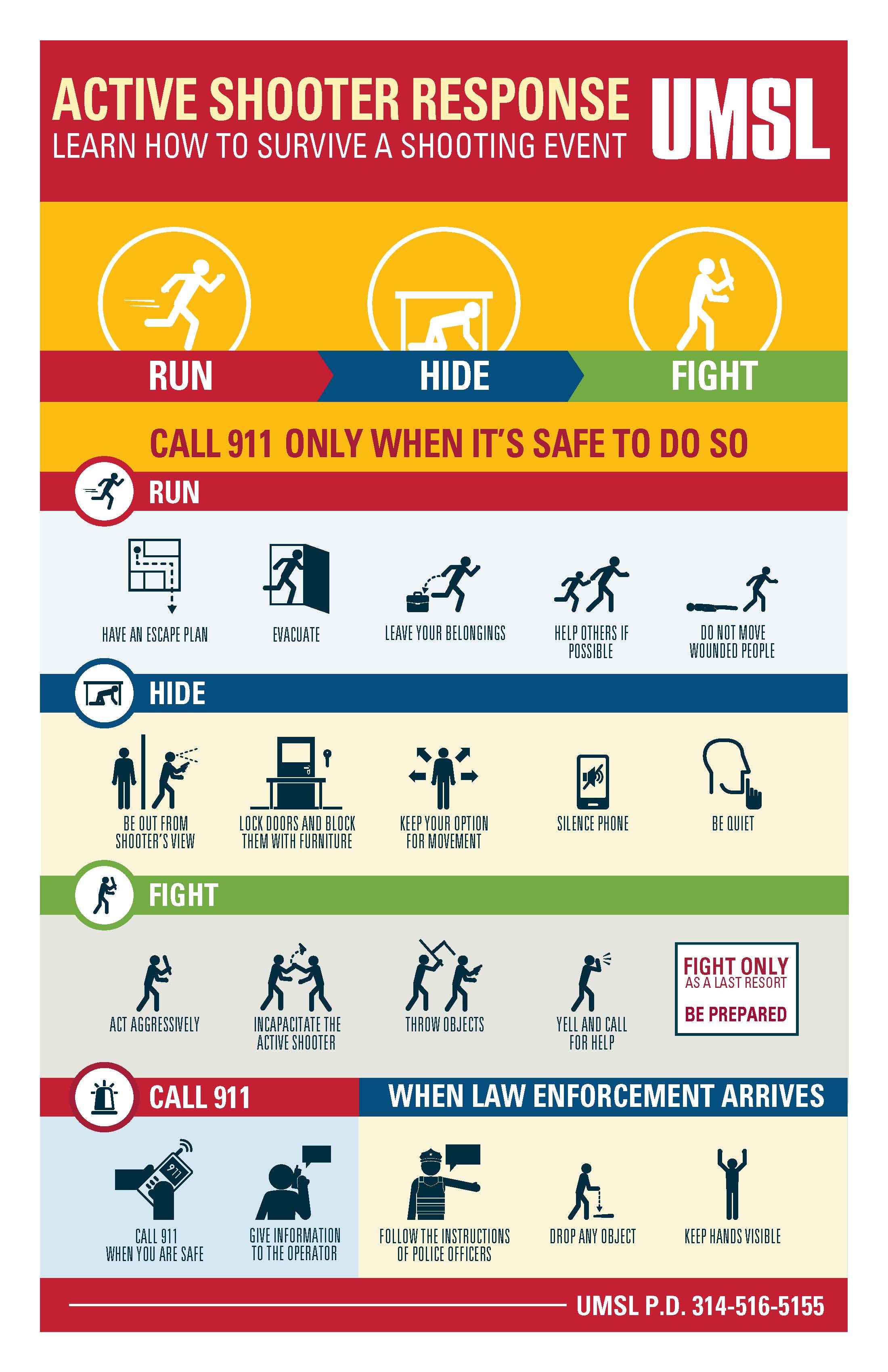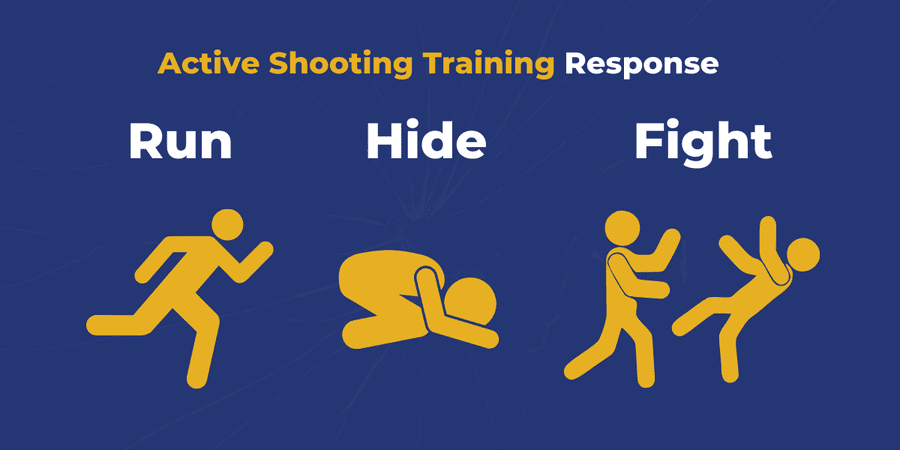Comprehensive Active Shooter Training Programs for Schools and Workplaces
Comprehensive Active Shooter Training Programs for Schools and Workplaces
Blog Article
Implementing Energetic Shooter Training: Best Practices for Creating a Safe and Prepared Neighborhood Setting
As neighborhoods challenge the unsettling fact of active shooter occurrences, the execution of thorough training programs ends up being imperative. What are the critical elements that can change a common training program right into a robust design for area resilience?

Understanding the Requirement for Training
In an era marked by increasing incidents of violence in public areas, comprehending the need for energetic shooter training has never ever been extra vital. The frequency of mass capturings throughout various environmentsâEUR" such as institutions, work environments, and buying centersâEUR" underscores the necessity for individuals and organizations to be prepared for such emergencies. Energetic shooter scenarios can unfold swiftly, leaving little time for individuals to respond efficiently. For that reason, thorough training initiatives can outfit participants with the knowledge and abilities to react decisively.
Additionally, the emotional effect of physical violence on people and neighborhoods can not be overstated. Training fosters a feeling of empowerment and readiness, allowing individuals to really feel even more protected in their environments. It also promotes a culture of security, where awareness and caution end up being essential components of daily life. The benefits of active shooter training prolong beyond instant response; they consist of enhancing interaction protocols and enhancing general precaution within companies.
Trick Parts of Effective Programs
Efficient energetic shooter training programs include several vital components that enhance preparedness and feedback abilities. Detailed curriculum advancement is important, ensuring that training web content is pertinent, evidence-based, and tailored to the specific needs of the organization or area. This consists of comprehending the dynamics of energetic shooter occurrences and the mental influence on people entailed.
2nd, reasonable training scenarios must be utilized to simulate possible circumstances, allowing participants to exercise decision-making and feedback methods in a controlled environment. These drills promote muscle memory and build confidence amongst individuals.
Third, an emphasis on communication procedures is vital. Establishing clear lines of communication among regulation enforcement, emergency responders, and individuals makes sure worked with reactions throughout an occurrence. Routine updates and correspondence course aid keep interaction pathways clear and reliable.
Fourth, recurring assessment and comments devices must be incorporated right into the training program - active shooter training. Examining the performance of training with individual feedback and performance metrics permits constant enhancement
Lastly, promoting a society of safety and security and readiness within the area motivates watchfulness and aggressive measures, making sure that individuals are not only skilled however also participated in keeping a safe environment.
Engaging Area Stakeholders

To successfully involve these stakeholders, it is vital to communicate the goals and benefits of the training. Hosting informational sessions can aid clear up the training's objective, address worries, and detail the duties each stakeholder might play. Moreover, developing a stakeholder advisory board can help with recurring dialogue, permitting diverse perspectives and insights to be integrated right into the training program.
Building partnerships with neighborhood leaders and companies redirected here is additionally crucial. Their assistance can improve outreach initiatives, increase involvement, and guarantee that training is tailored to the unique needs of the area. In addition, stakeholders can help in distributing details and sources, enhancing the message of safety and security and readiness.
Ultimately, engaging neighborhood stakeholders not just reinforces the training effort however additionally grows a feeling of possession amongst residents, bring about a more resistant and educated community efficient in responding efficiently to possible threats.
Educating Distribution Techniques
Utilizing a selection of training distribution techniques is vital to fit the varied discovering designs and requirements of participants in energetic shooter training programs (active shooter training). Effective training can take several types, consisting of lectures, hands-on simulations, online modules, and interactive workshops. Each approach offers an one-of-a-kind function and can boost the general learning experience

Online modules use versatility and accessibility, enabling participants to learn additional hints at their own rate. These can consist of video clips, quizzes, and discussions to gauge understanding. Interactive workshops encourage seminar and problem-solving, advertising team effort and communication skills.
Incorporating a combined technique that incorporates these methods not only improves the training experience yet likewise makes sure that individuals are better prepared to respond properly in the event of an active shooter circumstance (active shooter training). By attending to various discovering preferences, organizations can create a much more educated and receptive area
Continuous Examination and Enhancement
Normal evaluation and enhancement of active shooter training programs are critical to preserving their relevance and efficiency. As risks evolve, so must the methods and methodologies utilized in training. Constant assessment ensures that training material mirrors the current knowledge on active shooter occurrences, integrating lessons picked up from recent occasions and changing for arising trends.
To facilitate this process, organizations need to establish feedback mechanisms that consist of participant analyses, specialist testimonials, and occurrence debriefs. Gathering data on individual performance throughout drills and exercises is vital, as it highlights areas requiring improvement and informs future training sessions. In addition, involving with regulation enforcement and emergency situation -responders can give beneficial understandings into the usefulness and applicability of training procedures.
Frequently scheduled evaluations of training materials and techniques need to be mandated, cultivating an environment of innovation and versatility. Organizations needs to likewise encourage a culture of recurring knowing, where team member really feel encouraged to suggest changes based on their experiences. By devoting to constant evaluation and improvement, companies not just boost the effectiveness of their active shooter training programs but likewise reinforce their total commitment to safety and security and readiness within the community.
Verdict
In verdict, efficient execution of active shooter training necessitates a thorough technique that prioritizes neighborhood engagement and reasonable simulations. Ultimately, a dedication to ongoing training and improvement grows a culture of watchfulness and preparedness, making sure a much safer environment for all area participants.
Report this page